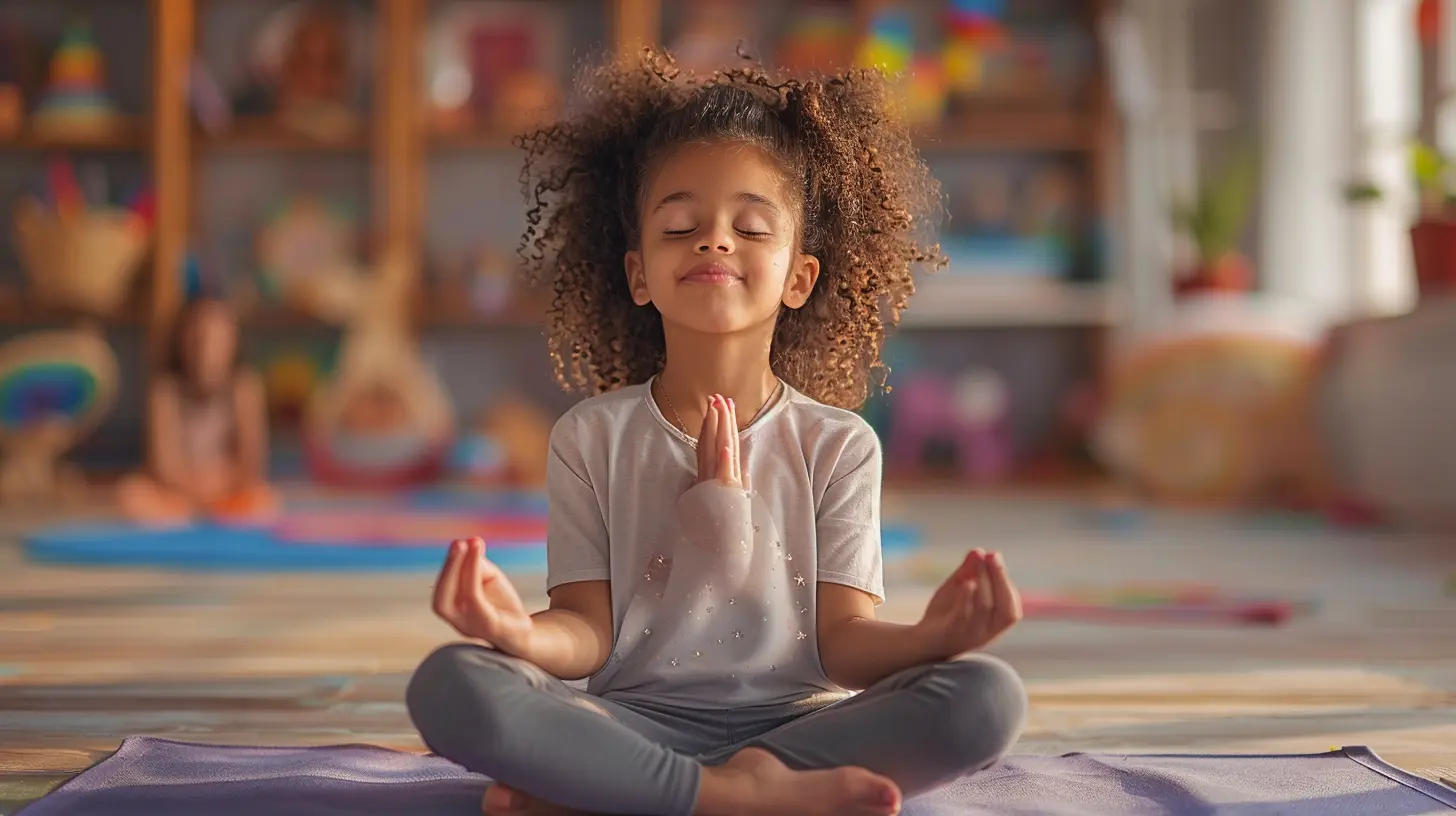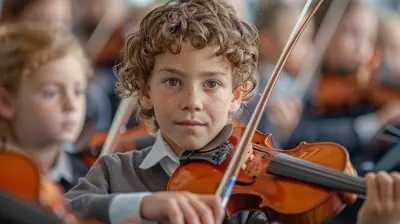13 October 2025
Let’s face it—teaching can feel like navigating a storm on a small boat. Between grading papers, managing classroom behavior, and juggling countless responsibilities, there’s barely a moment to breathe. Now imagine showing your students how to find that breath, that stillness amidst the chaos. That’s where mindfulness enters like a calm breeze on a hectic day.
Mindfulness isn’t just a buzzword anymore. It’s becoming a powerful tool in education, transforming classrooms into safe spaces where students (and teachers!) can thrive emotionally, mentally, and even academically. And the best part? You don’t have to be a Zen master to teach it.
In this post, we’ll dive deep into how educators like you can integrate mindfulness into your classroom with effective, practical, and uplifting lesson plans. Ready to bring some peace into your daily routine? Let’s get into it.
What is Mindfulness—and Why Should Teachers Care?
Mindfulness is the simple practice of being fully present, aware of where we are and what we’re doing, without being overly reactive or overwhelmed.Sounds lovely, right?
But here's the thing—it's not just about sitting quietly or meditating in silence. In a classroom setting, mindfulness can help reduce stress, improve focus, boost emotional regulation, and build stronger relationships between students and teachers.
And with all the noise and distractions of modern life (hello, smartphones and social media!), guiding students in mindfulness is like giving them a superpower. You're not just teaching them to focus—you’re teaching them to live better.
The Impact of Mindfulness in the Classroom
Let’s talk real results. Research has shown that mindfulness can:- Increase students' attention spans and working memory
- Reduce stress, anxiety, and emotional outbursts
- Improve empathy and social-emotional intelligence
- Strengthen teacher-student communication
Think about it. A student who's able to take a deep breath before reacting angrily? That’s progress. A teacher who ends the day feeling fulfilled instead of frazzled? That’s gold.
Before You Start: Laying the Foundation
Before rushing into lesson plans, it's important to build your own mindfulness practice. Why? Because students learn best by example. You can’t pour from an empty cup, right?Start with just five minutes a day. Sit comfortably, close your eyes, and focus on your breath. When your mind wanders (and trust me, it will), gently guide it back. No judgment, no stress—just awareness.
Once you’ve got your footing, integrating it into your teaching becomes natural. And trust me, your students will feel the difference.
Teaching Mindfulness: Top Lesson Plans for Educators
Let’s break down some practical, actionable lesson plans that you can customize to fit your students' age, needs, and energy levels.1. Mindful Breathing (Grades K-12)
Objective: Improve focus and emotional regulationTime: 5-10 minutes
Materials: None
Instructions:
1. Ask students to sit quietly and close their eyes (optional).
2. Guide them to focus on their breath—feeling the air enter through the nose and out through the mouth.
3. Use prompts like: “Let’s count 5 deep breaths together,” or “Notice how your chest rises and falls.”
4. If they get distracted, remind them that it’s okay and gently bring them back to the breath.
Why it works: It's simple. It centers attention and brings calm in seconds.
2. The Five Senses Exercise (Grades 1-8)
Objective: Enhance present moment awarenessTime: 10 minutes
Materials: Optional objects (e.g., leaves, stones, soft fabric)
Instructions:
Pause and ask students to notice:
- 5 things they can see
- 4 things they can touch
- 3 things they can hear
- 2 things they can smell
- 1 thing they can taste
Why it works: It grounds them instantly and sharpens their sensory awareness.
3. Mindful Journaling (Grades 6-12)
Objective: Encourage self-reflection and emotional intelligenceTime: 15-20 minutes
Materials: Journals or paper and pens
Prompts to try:
- “What’s one thing that made me smile today?”
- “When did I feel stressed, and what helped me calm down?”
- “Describe a moment today when I felt at peace.”
Why it works: Writing brings thoughts out of the mind and onto the page, creating clarity.
4. Gratitude Circles (Grades 3-12)
Objective: Boost positivity and connectednessTime: 10 minutes
Materials: None
Instructions:
Have students sit in a circle and take turns sharing one thing they’re grateful for. Keep it light and pressure-free—sharing is encouraged, not required.
Why it works: It rewires the brain for positivity and builds classroom community.
5. Mindful Movement (Grades K-12)
Objective: Release excess energy and tune into the bodyTime: 10 minutes
Materials: None
Examples:
- Simple stretching combined with conscious breathing
- “Yoga Freeze” (inspired by musical chairs): play music, when it stops, hold a yoga pose
- Walking meditation around the classroom
Why it works: Movement + mindfulness = better focus afterward.
Adapting Mindfulness for Different Age Groups
Every age group processes mindfulness a bit differently. Let’s break it down:Young Kids (K-2)
Make it playful! Use imaginative storytelling like "breathe like a dragon" or "pretend you're a quiet ninja." Keep sessions short—3 to 5 minutes is plenty.Elementary (Grades 3-5)
Introduce simple mindfulness vocabulary like “focus,” “calm,” or “pause.” Use games and visuals to explain concepts.Middle School
Explore emotional regulation more deeply. Journaling, group discussions, and longer exercises work well here.High School
Now you can really dive into complex ideas—stress, resilience, and mental health. Let them lead discussions and share their experiences.Encouraging Whole-School Mindfulness
Want next-level impact? Make mindfulness a school-wide initiative. Here’s how:- Mindful Mornings: Start the day with one minute of breathing during announcements.
- Staff Sessions: Teachers need mindfulness too—host weekly sessions for the whole faculty.
- Mindful Zones: Create a peaceful corner in classrooms or the library where students can regroup.
Even small shifts ripple outward.
Common Challenges—and How to Overcome Them
Let’s keep it real. Teaching mindfulness isn’t always smooth sailing. Here are some bumps along the road and what to do about them:“My students won’t take it seriously.”
Use humor, be consistent, and set the tone. Don’t force it—invite them to try.“There’s no time in the schedule.”
Start small—just one minute a day. You’ll be amazed how powerful it is.“I’m not qualified to teach this.”
Guess what? You don’t need a PhD in mindfulness. You just need a practice, an open heart, and a willingness to grow.Tracking Progress Without Judgment
This isn’t about test scores or gold stars. But it’s still helpful to reflect on impact. Try:- Journal reflections from students
- Mood boards or “feelings thermometers”
- Anecdotal observations of behavior over time
Celebrate the journey, not just the results.
Final Thoughts: You’re Planting Seeds
Let’s step back for a moment. When you teach mindfulness, you’re sowing seeds that might not bloom today—but they will bloom. Maybe it's a calmer reaction in a tough moment. Maybe it’s a deeper friendship because of better emotional awareness. Maybe it’s a future adult who handles stress with grace instead of anger.You’re not just teaching a subject. You’re teaching life skills. You’re shaping hearts and minds. And that’s a beautiful, powerful thing.
So take a deep breath, smile, and start small. You’ve got this.








Darrow McKinstry
In the tapestry of teaching, mindfulness weaves a golden thread, Guiding young hearts to stillness where inner peace is bred. These lesson plans, a gentle call, nurture presence in the thrall, Empowering minds to flourish, embracing each moment's sprawl.
November 6, 2025 at 1:31 PM